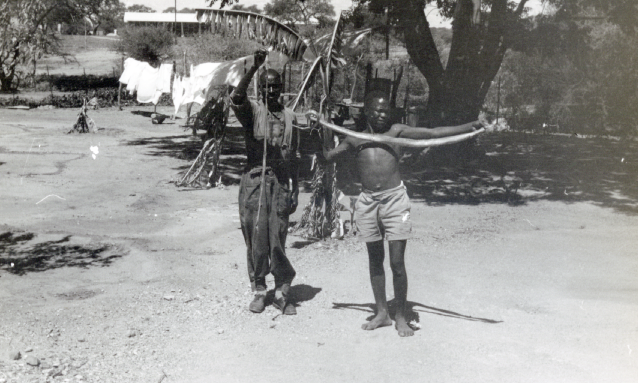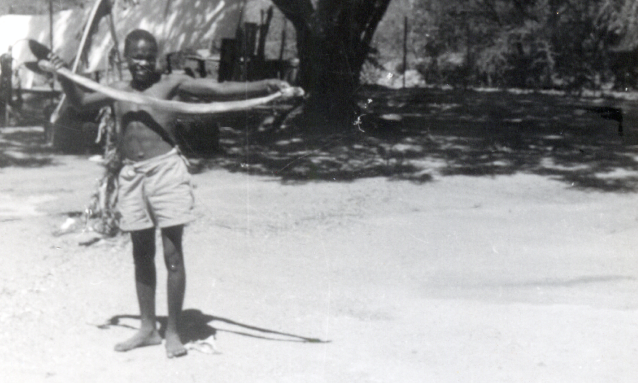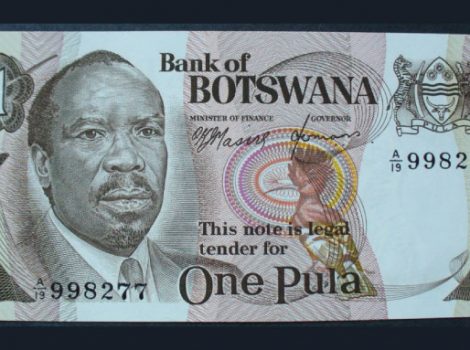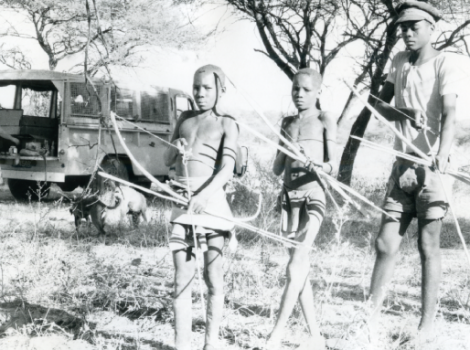
The images attached are of snakes that were found in the garden; there is a long fat one and a long thin one. I have no idea of the story behind these or the reason why my father photographed them. Possibly it was to show family back in the UK how we lived? Suffice to say that they were a constant nuisance in Maun, and as children, we were strongly discouraged from climbing trees or picking up ‘sticks’ on the lawn!
There is an amusing story about my elder sister (she was younger than 8 at the time). She walked into the house one day, picked up her slipper and told our parents she was going to kill a ‘goga’ (insect). My parents heard her beating something, so they went outside to investigate and there she was beating the living daylights out of a baby cobra! No harm came to my sister, fortunately.

And there were crocodiles as well…
The images below were taken at Crocodile Camp. I am not sure where the other photo was taken, but I suspect it may be of Bobby Wilmot. Lloyd Wilmot may be able to help with this.

The images display what was a common feature at crocodile camp, where the heads would be lined up drying. Some were only the bones. As children, we were forbidden to play with these, as we were told that if we opened the jaws, put our hand inside and let the jaw drop, it would bite our hand off! I never tested this theory.
The ‘action shot’ with the gun intrigues me, as my father didn’t have a telephoto lens as they were prohibitively expensive in those days. My father and the gentleman apparently preparing to shoot the crocodile must have been very close to a large crocodile.
Article and words by Ian Brooks
Ian’s father, Donald Brooks arrived in Maun in early 1962, leaving four years later in 1966. Brooks Snr was a police officer, trained in the UK, but working in the Colonial Service. His brief on being transferred to Maun was to sort out the ‘w’ element; there was a perception that there was insufficient regulation, particularly the hunting of the wild animals, and his task was to bring this under control.
Ian and his siblings were children while in Bechuanaland Protectorate/ Botswana; the younger 3 children were born in Bechuanaland Protectorate. The context is a combination of his own memory of life in Maun as a child, as well as various conversations with his parents over the years about the photographs and life in Botswana while they were there (1958 to 1968).



